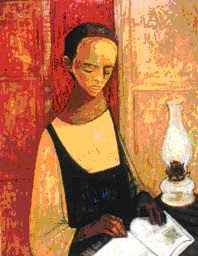Part 1.
http://carryonamerica.com/photosforblog/starbucks.jpg
1. The omnipresent Starbucks logo is an example of images in advertising. Here, the logo does not represent anything that actually has existed, but is an abstract image depending on connotative meaning. The art deco style of the drawing of the mermaid creates a simple and classy look, complemented by the monochromatic color scheme. The mermaid is wearing a crown, which adds an air of authority to her. The truth value of the logo is low, as it does not purport to tell any explicit truth, but rather exists to increase the perceived style of the brand.
http://x6.no/images/omtaler/DVD/seinfeld46.jpg
2. Seinfeld was an extremely popular television show during the 1990s and still has a large following in this decade. Each episode includes several awkward or amusing, but believable scenarios that the characters deal with during the course of the show. The sitcom’s humor and appeal comes from its representation of life as chaotic, which most people can relate to. Although few real people have lives like those of the characters, all of us can imagine experiencing the situations in the show, which gives it a high truth value in the eyes of viewers. The show is even partially based on true events that happened to Jerry Seinfeld and his friends, which even gives it a level of denotative truth, although embellished.
http://www.wackypackages.org/realproductsscans/2004/jk/cheez-it_small.jpg
3. Cheez-its are a common snack. On the box, the crackers are displayed, as well as a wedge of cheese and a seal saying the crackers contain real cheese. The crackers are obviously not real, as a few are suspended in midair in the picture. They also look better than the real ones contained inside the box. Photographic truth here is violated, as the box picture has been altered by image editing and staging. But the assumption of photographic truth is useful in convincing consumers to buy the snacks, as they think they will be getting exactly what they see on the package.
http://graphics8.nytimes.com/images/2007/08/28/world/29refugees.600.jpg
4. This picture from the New York Times shows Iraqi refugees seeking help in
http://www.twittermosaic.com/wp-content/uploads/2007/07/the_blue_marble.jpg
5. The Blue Marble is perhaps the most famous picture of the Earth, taken from the moon during Apollo 17. It shows swirling clouds, azure seas, and the entirety of
An example of high art on campus is the painting Country Games by Mel Hunter. This painting is located on the third floor of Olin Library, at the north end of the hall. The painting depicts two children playing hide and seek in the winter. One child hides in a covered part of a dilapidated barn, while the other can be seen searching outside in the snow. This painting is a form of high art because it is original, interpretable, and aesthetically pleasing. Mel Hunter painted this picture, which gives it value because it is the original – he created it himself, it is irreplaceable, and any reproductions must be made from it. The memories of childhood that flow through the viewer’s mind give the painting value because it makes the viewer think and interpret what is going on in the painting, and what meaning Hunter placed into it. Also, the winter scene of the painting is pleasing to look at, if one chooses not to look closely.
http://www.canmag.com/images/front/movies2007/300-poster4.jpg
This poster for the movie 300 is a form of low art because it is from popular culture. It was created to advertise the movie, not as a standalone piece of art. The poster relies on its relationship to the movie to make sense and generate appeal for itself. Also, the posters are all reproductions. The original is nowhere to be found, possibly digitally generated. There is also little interpretive value in the poster, because it makes its meaning explicit, which is to watch the movie.
Part 2.
The mass media is a way of creating the popular culture, and also of manipulating the customs and behavior of a society. It also is impossible to control except by an elite few who own the broadcasting and press companies.
The fastest way to get any message out is to disseminate it through television, because this will reach the greatest number of people. If nothing runs counter to this message it will go unchallenged and most people will gradually begin to accept it without even noticing. And since most people have favorite channels and programs, they are unlikely to encounter opposing ideas. An example of this occurring is the increase in both violence and sexuality in television and film over the past half a century. The film Psycho was controversial when it was released due to the famous shower scene. Today, such scenes are included in most films, and many have sex scenes. Violence has progressed the same way. Each year, horror films have become more and more violent, culminating with the release of Hostel. Audiences have been appalled at the blood and gore, but soon this will become acceptable as it has in the past, as the film industry changes the social perception of sexuality and violence.
Therefore, the media is powerful. But it is oppressive because individuals, or even a majority of individuals cannot rise to stop it easily. The media runs its programs to appeal to the greatest number of people. Since the media effectively controls the cultural norms, it can therefore control how it appeals to the majority, which will perpetuate its business. Even if a sizeable group opposes the media, it would have difficulty communicating its message due to FCC restrictions on television stations and networks, which allow only a few networks to have certain frequencies, which will prevent new stations from springing up. The media’s control over information is nearly impossible to shape, and difficult to stop.
The internet offers a rich underground for those opposing prevailing ideas to disseminate their information. The internet may gradually replace traditional mass media, which will result in more democratization of the media since anyone can put their own message on the internet.



































